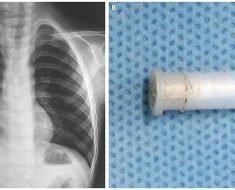We’re all washing our hands more than we have ever washed them before. But not only that, we’re also slathering on hand sanitiser every chance we get. But are we using it properly?
As part of the international effort to curb the spread of coronavirus and limit our exposure to dangerous germs, we’re all dousing our hands in alcohol-based sanitiser much more regularly, but are we doing it right?
Turns out there is actually a right way and a wrong way to use sanitiser, and it could be the difference between keeping yourself and others healthy and spreading illness. So let’s try to get it right.
The best technique for using hand sanitiser
Firstly, take off any rings or jewellery on your hands. Ideally, also rinse any visible grime or dirt left by jewellery before using the sanitiser.
According to the Centres for Disease Control and Prevention, there are three steps to using hand sanitiser properly:
- Apply the gel product to the palm of one hand (read the label to learn the correct amount).
- Rub your hands together.
- Rub the gel over all the surfaces of your hands and fingers until your hands are dry. This should take around 20 seconds.
When you’re rubbing in the sanitiser, it’s really important to cover the complete surfaces of both of your hands, including fingers and around your fingertips and nails – and don’t forget the backs of your hands and fingers.
You should also rub in the sanitiser about two inches up each wrist.
When to use hand sanitiser
Using hand sanitiser periodically throughout the day can help to limit the risk of getting sick and spreading germs – but there are certain times when it’s more important to use it.
The best times are when you’re on the go and you can’t access soap and water. So that could be during your commute, on the tube or a bus, or simply walking around the shops.
It’s also good to use it after washing your hands – it’s you want the extra reassurance that you have really got rid of those germs.
What kind of hand sanitiser should you use?
The CDC recommends sanitizers with at least 60% alcohol content.
Most products contain between 60% and 95%, but don’t assume that the higher the percentages are more effective.
To work at peak efficiency, these products also need to contain some water.
Products without alcohol likely won’t be effective at killing microbes and germs on your hands.
Before eating lunch or snacks at your desk is a good time to use it, or if you have coughed or sneezed into your hand and are unable to access soap and water – this is a good stop-gap until you can get to a sink.
You don’t need to wash your hands after using sanitiser before you eat, you just need to make sure it has thoroughly dried.
Also, think about who you are coming into contact with. If you are holding a baby or a child or will be close to older people or people with health conditions, make sure you use sanitiser before interacting with them – to help protect them from germs you may be carrying.
When shouldn’t you use hand sanitiser?
The most effective way to remove or deactivate germs is to clean your hands with clean running water and soap. So, hand sanitiser should never replace soap and water where possible.
Hand sanitisers may not be as effective when hands are visibly dirty or greasy – so in this situation, wash your hands thoroughly before reaching for the sanitiser bottle.
Be wary of any wounds or cuts on your hands. The alcohol in santiser can be irritating and painful, so if you have cuts you might prefer to wash your hands with soap and water more frequently instead.
Hand sanitizers might not remove harmful chemicals, like pesticides and heavy metals, from hands. If you’ve been in contact with anything like this, you will need to wash your hands with soap and water.
So, now you know how to use hand sanitiser, all you have to do is get your hands on a couple of bottles.
Good luck.
Source: Read Full Article





